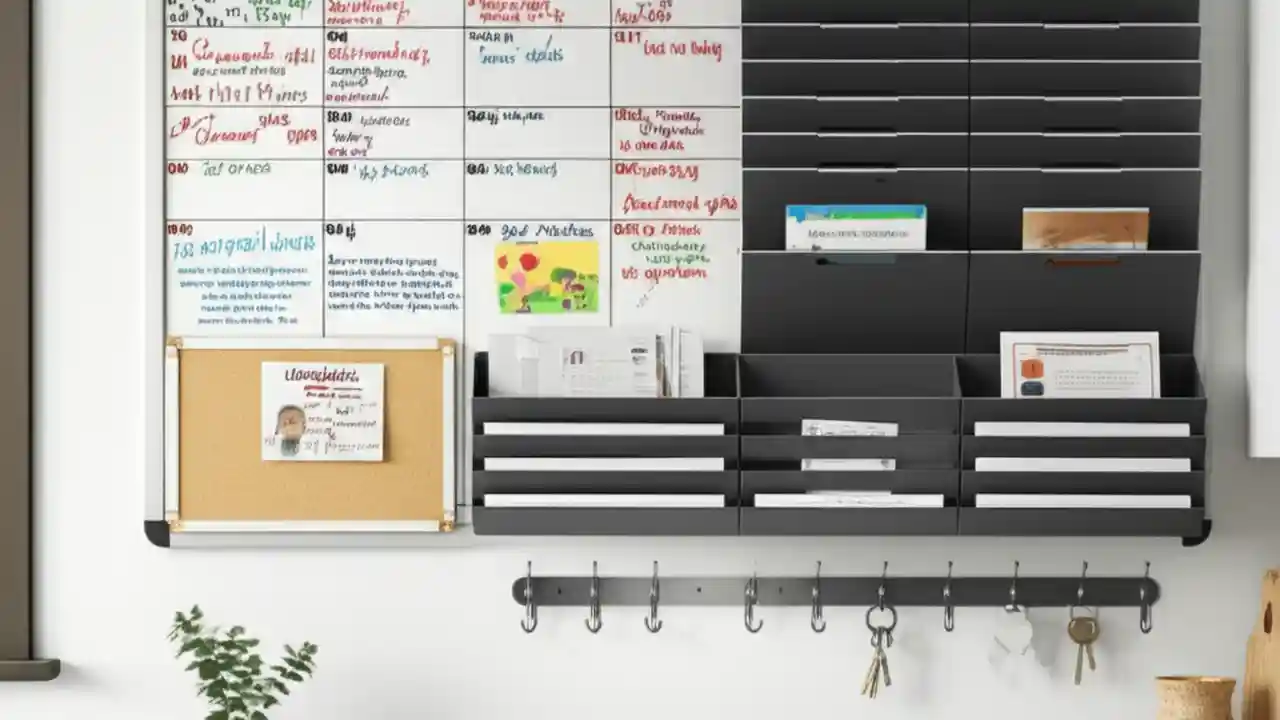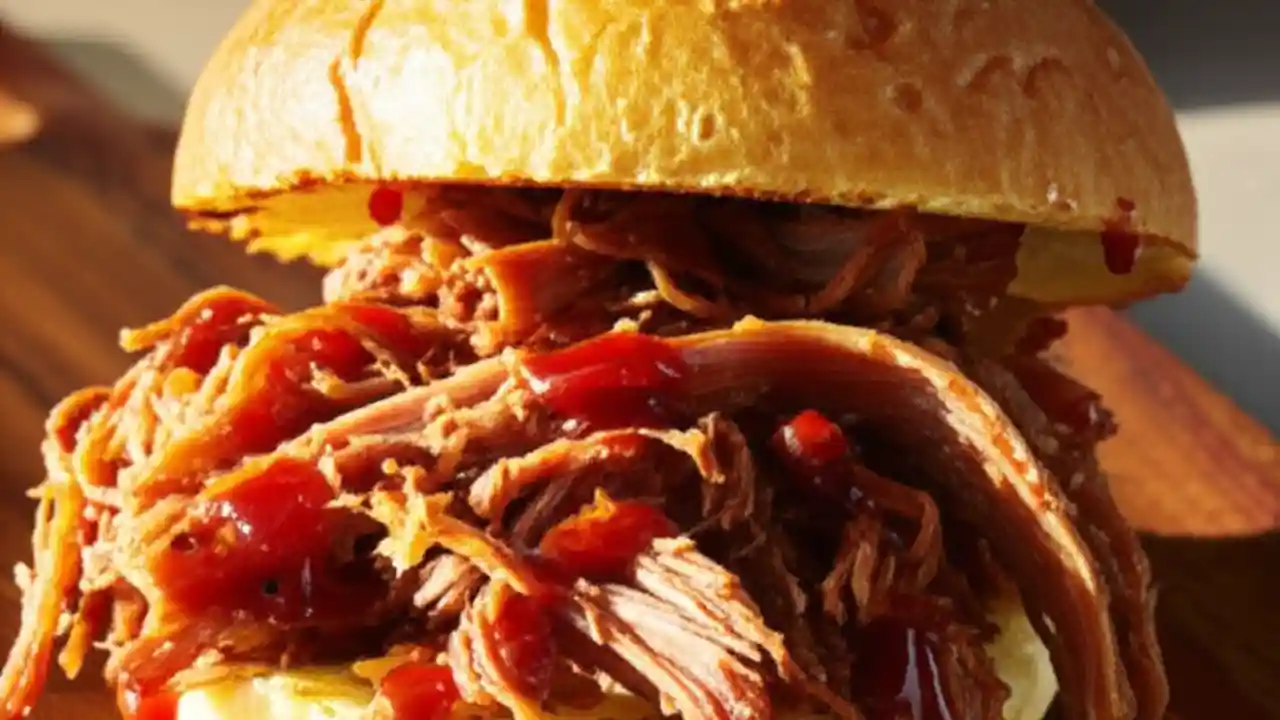The secret to organizing your kitchen countertops is a simple, three-step method: ruthlessly declutter everything, assign specific “zones” for items that must stay, and then style those zones for beauty and function. It’s not about having perfectly empty surfaces, but about creating an intentional, efficient, and peaceful workspace that works for you.
I get it. The kitchen counter is the natural dropping ground for everything from mail and keys to the kids’ school projects and that blender you swear you’ll use one day. It can quickly become a source of daily stress. But after two decades of helping people reclaim their spaces, I can promise you that a calm, organized countertop is within your reach.
This comprehensive guide will walk you through that exact process. We’ll cover how to decide what stays and what goes, the best ways to handle appliance clutter, and clever solutions for small kitchens. We’ll even explore how to maintain your newly organized space so it doesn’t revert to chaos in a week. Let’s transform your countertops from a cluttered mess into the functional heart of your home.
Table of Contents
The 3-Step Foundation: Declutter, Zone, and Style
Think of this as the core philosophy. Every successful countertop organization project I’ve ever seen follows these fundamental principles. Mastering them means you’re not just cleaning up for today; you’re building a system for long-term success.
What is the first step to organizing countertops? The Great Declutter
Before you buy a single organizer, you must purge. You cannot organize clutter. The goal is to get your counters completely clear so you can see the space you’re working with. It might look worse before it gets better, but trust the process.
- The “Everything Off” Rule: Take literally everything off your countertops. Everything. Place it all on your kitchen table or the floor. This is a powerful psychological reset that allows you to see your space with fresh eyes.
- Clean the Surface: Give your now-empty counters a thorough wipe-down. This is your blank canvas. It feels amazing and motivates you to keep it that way.
- Sort and Decide: Go through the pile item by item and sort everything into four categories:
- Keep on Counter: These are items you use every single day, multiple times a day (e.g., coffee maker, soap dispenser, knife block). Be brutally honest here.
- Relocate: These are items that belong in the kitchen but not on the counter (e.g., specialty appliances, bulk spices, extra mugs). Find them a new home in a cabinet or pantry.
- Put Away: This is for things that don’t belong in the kitchen at all. Think mail, screwdrivers, kids’ toys, library books. Return them to their rightful homes immediately.
- Donate/Toss: Be ruthless. That broken toaster, the expired vitamins, the set of 30 souvenir shot glasses you never use. Let them go.
I remember a client who had three different can openers on her counter. She couldn’t explain why. During the declutter, we realized one was broken and one was a duplicate gift. By simply clearing the space and asking “Do I truly need this here?” we instantly created more room and less confusion.
How do I decide what stays? The “Zone” Philosophy
Now that you only have your “Keep on Counter” items left, it’s time to give them a home. This is where zoning comes in. Zoning means grouping like items together in logical areas based on how you use your kitchen. This is the key to making your layout intuitive and efficient.
Common kitchen zones include:
- The Prep Zone: Usually the largest clear stretch of counter space, often near the sink or trash can. This is where you’ll keep your cutting board, knife block, and maybe a small bowl with salt, pepper, and cooking oil.
- The Cooking Zone: The area next to your stove. This is a good spot for a utensil crock with spatulas and spoons, and perhaps a tray for your most-used cooking oils and spices.
- The Coffee/Tea Zone: Group your coffee maker, grinder, mugs, sugar, and tea bags all in one dedicated station. It contains the morning rush to one spot.
- The Cleaning Zone: The area around the sink. This should house your soap dispenser, a sponge holder, and maybe a small tray to keep things tidy and prevent water spots.
- The “Drop” Zone (Optional): If you have the space, dedicate a small bowl or tray near the entrance of the kitchen for keys, wallets, and mail. This contains the inevitable daily clutter and prevents it from spreading.
How do I make my organized counters look good? Styling with Purpose
Organization is about function, but that doesn’t mean it can’t be beautiful. The final step is to style your zones so they look intentional and cohesive, not just like a collection of stuff.
Here are a few simple styling tricks:
- Use Trays and Boards: This is the number one trick for making counters look polished. Grouping items like oil bottles, salt cellars, or your coffee station supplies on a tray, marble slab, or wooden cutting board instantly makes them look like a single, curated vignette instead of random clutter.
- Decant and Unify: Pour items like dish soap, hand soap, sugar, and flour into matching or coordinating dispensers and canisters. This eliminates chaotic brand labels and creates a serene, uniform look.
- The Rule of Three: When decorating, group items in odd numbers, especially threes. A small plant, a candle, and a stack of two cookbooks look more visually appealing than four random objects.
- Add Life: A small pot of fresh herbs (like basil or mint), a bowl of fruit (like lemons or apples), or a simple vase with a few fresh stems can bring color and life to your kitchen without adding clutter.
Solving Common Countertop Clutter Culprits
Even with a great system, some items are just plain tricky. Let’s tackle the biggest offenders one by one with practical, real-world solutions.
How do I deal with appliance clutter?
Appliances are often the biggest space hogs. That stand mixer is beautiful, but does it need to live on the counter if you only bake once a month? The key is to balance accessibility with available space.
First, re-evaluate every appliance using the “daily use” rule. If you don’t use it daily (or at least 4-5 times a week), it should not live on your counter. Period. For everything else, consider these solutions.
| Storage Solution | Best For | Pros | Cons |
|---|---|---|---|
| Appliance Garage | Toasters, blenders, stand mixers | Hides appliances completely; keeps them plugged in and ready | Requires custom cabinetry or a countertop unit; can be expensive |
| Lower Cabinet/Pantry | Infrequently used items (slow cooker, food processor) | Frees up valuable counter space | Can be heavy to lift; less convenient |
| Rolling Cart | Microwaves, air fryers, large mixers in small kitchens | Adds storage and counter space; can be moved out of the way | Takes up floor space; might not match kitchen decor |
| Dedicated Counter Zone | Daily use items (coffee maker, high-speed blender) | Maximum convenience | Takes up prime real estate; must be kept clean |
How do I organize my coffee station on the counter?
A well-organized coffee station can be a joyful part of your morning routine. The goal is to have everything you need within arm’s reach.
- Define the Space: Choose a spot for your station, ideally near an outlet and not too far from the sink.
- Use a Tray as a Base: Place a tray (wood, metal, ceramic) down first. This creates a visual boundary for your coffee zone.
- Position the Machine: Place your coffee maker or espresso machine on the tray.
- Add Canisters: Use matching canisters for coffee beans/grounds, sugar, and tea bags. This looks much tidier than a collection of bags and boxes.
- Corral the Tools: Use a mug or a small container to hold spoons, stirrers, or a frothing wand.
- Stack Mugs Smartly: If you keep mugs out, limit them to 2-4 of your favorites. You can use a small, vertical mug tree or simply stack two.
This self-contained station not only looks great but also makes cleanup a breeze. You just have to wipe down one tray instead of multiple spots on the counter.
How should I handle mail, keys, and daily clutter?
This is the “danger zone” for clutter. Without a system, this stuff will take over. The solution is to create a dedicated, and strictly limited, “drop zone.”
Find a small decorative bowl, a narrow tray, or a wall-mounted mail sorter with key hooks. Place it in the most natural entry point to your kitchen. Train yourself and your family that this is the *only* place for these items to land. The key is to process the contents of the drop zone regularly—at least once every two days. Sort the mail, put the keys away, and clear the space. A drop zone is a temporary holding area, not a permanent storage solution.
What are the best ways to organize spices and oils?
Keeping cooking essentials handy is great, but a sea of mismatched bottles is a visual nightmare. Here’s how to tame them.
- For Oils & Vinegars: Pour your most-used olive oil, vegetable oil, and vinegar into attractive, matching glass dispensers with pour spouts. Place these 2-3 bottles on a small tray or ceramic dish next to the stove. Store the large, original containers in the pantry.
- For Spices: Only keep your top 3-5 most-used spices on the counter (likely salt, pepper, garlic powder). You can use a small tiered shelf or a simple tray. A magnetic spice rack on the side of your fridge is another fantastic way to get spices off the counter but keep them accessible.
Smart Solutions & Pro-Tips for a Better Countertop
Once you’ve got the basics down, a few extra tips and tricks can elevate your organization game, especially if you’re dealing with a small or challenging space.
What are the best organizers for kitchen counters?
While the goal is less stuff, the right organizers can be game-changers. The best ones add vertical space and group items neatly.
| Organizer Type | Why It Works | Best Used For |
|---|---|---|
| Tiered Tray/Shelf | Doubles your storage space vertically. | Spices, mugs, small bowls of salt/sugar. |
| Utensil Crock | Keeps cooking tools upright and accessible. | Spatulas, whisks, wooden spoons next to the stove. |
| Cake Stand | Elevates items and creates a stylish focal point. | Holding soap dispensers and sponges by the sink. |
| Lazy Susan (Turntable) | Makes items in a corner easily reachable. | A collection of oils, vinegars, and spices. |
| Knife Block/Magnetic Strip | Safely stores sharp knives and keeps them handy. | Your main set of cooking knives in the prep zone. |
How can I create more counter space in a small kitchen?
When space is tight, you have to get creative. It’s all about using overlooked surfaces and multi-functional items.
- Over-the-Sink Cutting Board: These custom-fit boards slide over your sink, instantly creating a new prep surface. It’s perfect for chopping vegetables and sliding scraps right into the disposal.
- Use Vertical Space: Install a wall rail system (like IKEA’s HULTARP) with hooks and small containers to hang utensils, spices, and even small herb pots. This gets a ton of stuff off the counter and onto the wall.
- Magnetic Everything: The side of your refrigerator is prime, unused real estate. Use magnetic knife strips, spice racks, and paper towel holders to free up counter space.
- Stovetop Cover: If you have a flat electric or induction cooktop, a wooden or metal stovetop cover (also called a noodle board) can serve as extra prep space when the stove isn’t in use.
- Appliance Diet: In a small kitchen, you have to be even more ruthless. A hand-held immersion blender can often replace a bulky countertop blender. A French press or pour-over can replace a large coffee machine.
What should absolutely not be kept on kitchen counters?
Some things just don’t belong on the counter, either for safety, hygiene, or clutter-prevention reasons. Here’s a quick “do not keep” list.
- Extra Cooking Utensils: One crock with daily essentials is fine. The turkey baster, ice cream scoop, and melon baller belong in a drawer.
- Bulk Food Items: Bags of flour, sugar, or giant containers of cooking oil should live in the pantry. Decant small amounts for counter use.
- Medication and Vitamins: Heat and humidity from cooking can degrade them. Keep them in a cool, dry cabinet.
- Cleaners: Chemical cleaners should be stored safely away from food prep areas, typically under the sink.
- Stacks of Paper: Mail, bills, and newspapers are a major source of visual clutter and a potential fire hazard near the stove. Process them daily.
Maintaining Your Organized Oasis
You did it! Your counters are clean, zoned, and beautiful. So how do you keep them that way? It’s all about building simple habits.
How do professional organizers keep counters tidy? The Reset Routine
The secret isn’t constant, obsessive cleaning. It’s a quick, daily “closing shift” for your kitchen. Before you go to bed, take 5-10 minutes to do a quick reset.
- Load the dishwasher with any remaining dirty dishes.
- Wipe down the counters and the sink.
- Return any strays to their proper zones (put the salt shaker back, line up the soap dispenser).
- Clear the drop zone (if you have one).
Waking up to a clean, reset kitchen is one of the best gifts you can give your future self. It sets a positive tone for the entire day. A weekly reset might involve refilling canisters or doing a deeper clean.
What are some common countertop organization mistakes to avoid?
Seeing where others go wrong can help you stay on track. Here are the most frequent pitfalls I’ve observed.
| The Mistake | Why It’s a Problem | The Simple Fix |
|---|---|---|
| Buying Organizers First | You end up trying to find a home for clutter instead of eliminating it. | Declutter completely first, then buy only what you truly need. |
| Ignoring Prime Real Estate | Putting decorative items in your best prep space. | Keep the largest, most accessible counter area clear for work. |
| The “Out of Sight, Out of Mind” Drawer | Shoving everything into a “junk drawer” that just moves the clutter. | Give every single item a logical, permanent home. |
| Too Many Small Appliances | Believing you need a gadget for every task. | Be honest about what you use. Store or donate the rest. |
How do I get my family on board with keeping counters clean?
You can’t be the sole “counter cop.” Getting buy-in from everyone in the house is crucial for long-term success.
- Lead by Example: When they see you consistently using the new system, it will become the new normal.
- Make it Obvious: The beauty of zoning is that it’s intuitive. When there’s a clear, labeled spot for something, people are more likely to put it there. A bowl for keys is easier than a vague “put your stuff away” command.
- Communicate the “Why”: Explain that a clear counter isn’t about being neurotically tidy; it’s about making the kitchen easier for everyone to use and creating a more peaceful home.
- Assign a “Closing Shift”: Make the 5-minute nightly reset a family affair. One person can load the dishwasher while another wipes the counters. Many hands make light work.
Your Countertop, Your Sanctuary
Organizing your kitchen countertops is more than just a chore; it’s an act of self-care. By following the “Declutter, Zone, and Style” method, you’re not just creating a prettier kitchen. You’re designing a more efficient, functional, and calming space that will reduce daily friction and bring a little more peace to your life. Start today, and enjoy the lasting reward of a beautifully organized countertop every single day.
If this guide helped you conquer your counter clutter, feel free to share it with a friend who’s ready to do the same. Here’s to clear counters and calm kitchens!







